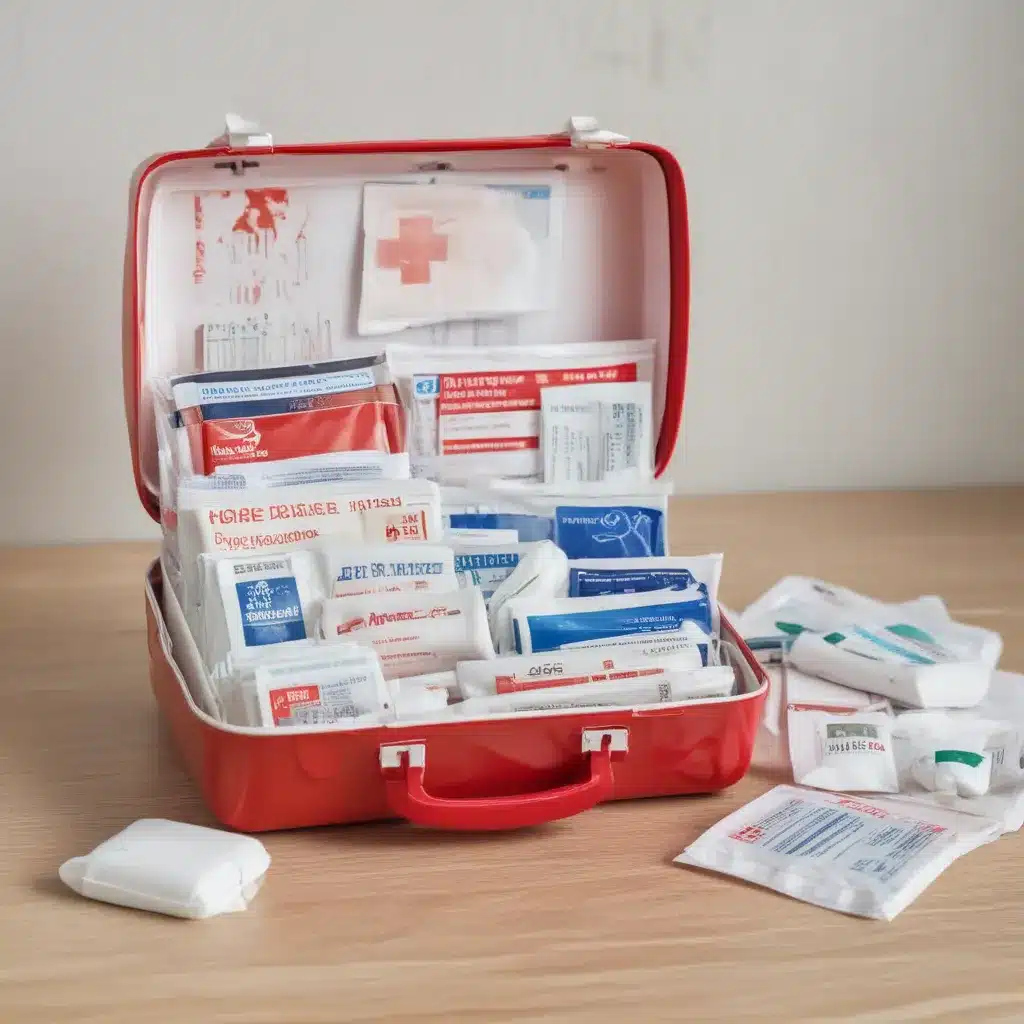
The Importance of Being Prepared
As a dog owner, I’ve learned the hard way that accidents and emergencies can happen at the most unexpected moments. One sunny afternoon, my energetic pup Buddy tore across the backyard, chasing a squirrel, and suddenly yelped in pain. I quickly rushed over to find that he had stepped on a sharp rock, leaving a nasty gash on his paw. In the panic of the moment, I frantically searched for my first aid kit, only to realize I didn’t have one prepared.
That incident taught me a valuable lesson – being ready for the unexpected can make all the difference when it comes to providing immediate care and potentially saving your furry friend’s life. A well-stocked first aid kit is an essential item for every dog owner, whether you’re at home, on the go, or exploring the great outdoors with your loyal companion.
Building Your At-Home First Aid Kit
The first step in assembling your at-home first aid kit is to gather the essential supplies. According to the experts at MyCPRCertificationOnline.com, a comprehensive home first aid kit should include items like adhesive bandages, gauze pads, antiseptic wipes, scissors, tweezers, and pain relievers.
But when it comes to caring for our canine companions, we need to go beyond the basics. Here’s a more extensive list of recommended items for your dog-specific first aid kit:
- Gauze rolls and pads
- Antiseptic spray or ointment
- Antibiotic ointment
- Hydrogen peroxide (to induce vomiting if your dog ingests something toxic)
- Diphenhydramine (for allergic reactions)
- Activated charcoal (to absorb toxins)
- Saline solution
- Milk of magnesia (for upset stomach)
- Digital thermometer
- Elizabethan collar (to prevent licking or scratching of wounds)
- Latex gloves
- Scissors
- Tweezers
- Cotton balls and swabs
- Tape
- Styptic powder (to stop minor bleeding)
- Leash or muzzle (for restraining an injured pet)
Remember, the specific items you include may vary depending on your dog’s size, age, and any pre-existing medical conditions. It’s always a good idea to consult with your veterinarian to ensure your first aid kit is tailored to your furry friend’s needs.
Storing and Maintaining Your Kit
Now that you’ve assembled your comprehensive first aid kit, it’s time to find the perfect spot to store it. According to the experts, the best location is the kitchen, as it’s the hub of family activity. However, you’ll want to avoid the bathroom due to the excessive humidity, which can degrade the shelf life of your supplies.
It’s also crucial to keep your first aid kit organized and easily accessible. Consider storing it in a clear plastic container or bag, so you can quickly identify the contents and grab what you need in an emergency. And don’t forget to regularly check the expiration dates on your medications and replace any items that have been used or are past their prime.
Knowing When to Seek Professional Help
While a well-stocked first aid kit can be a lifesaver in many situations, it’s important to remember that it’s not a substitute for professional medical care. Some injuries or illnesses may require the expertise of a veterinarian, and it’s crucial to know when to seek help.
According to the experts at Lifespan.org, signs that your dog may need immediate medical attention include losing consciousness, refusing to walk normally, or displaying worrying neurological symptoms like uncontrolled crying or head/neck pain.
If you ever find yourself in doubt, it’s better to err on the side of caution and contact your veterinarian or the nearest emergency animal hospital. After all, your dog’s well-being is the top priority, and a little proactivity can go a long way in preventing a minor incident from becoming a major medical emergency.
Putting Your First Aid Skills to the Test
Accidents and injuries can happen anywhere, at any time – even in the comfort of your own home. That’s why it’s crucial to have a well-stocked first aid kit readily available and to know how to use it effectively.
Just last week, I was enjoying a peaceful afternoon with Buddy when he suddenly let out a yelp. I rushed over to find that he had managed to cut his paw on a broken piece of ceramic from a decorative vase that had been knocked over. Without missing a beat, I grabbed my first aid kit, cleaned the wound, applied an antiseptic spray, and bandaged his paw. Buddy was back to his playful self in no time, and I couldn’t help but feel a sense of relief and pride in my ability to provide him with the immediate care he needed.
Of course, not every emergency is as straightforward, and it’s always best to err on the side of caution. If you ever find yourself in a situation where you’re unsure of how to proceed, don’t hesitate to contact your veterinarian or the experts at iHaveDogs.com for guidance. Being prepared and staying calm can make all the difference when it comes to caring for your beloved canine companion.
Conclusion
In the dynamic world of dog ownership, accidents and emergencies can happen when you least expect them. But with a well-stocked first aid kit and the knowledge to use it effectively, you can be the hero your furry friend needs when they need it most.
Remember, a little preparation goes a long way in keeping your beloved pup safe and healthy. So, take the time to assemble your at-home first aid kit, stay vigilant, and trust your instincts. With a little practice and a lot of love, you’ll be ready to tackle any minor mishap that comes your way.

